Chances are you’re doing it wrong. I’m sorry.
However, if you don’t care about the caloric information of anything ever, then feel free to just breeze on by and come back for cookies later! But for us humans who want to know this monumental secret I will most likely be referring back to for a long time, I recommend sticking around. Good thing I’m totally not biased or anything.
I cannot tell you how many questions/comments/emails/moderately panicked calls for help I get regarding this very topic. People (most often times very politely, so thank you) point out that my nutritional information is wrong, and that the actual stats are higher. It’s not wrong, folks. I just happen to know this little secret on how to correctly count calories, and I’m ready to let you all into the loop.
Ready? Okay. There’s this magical concept called a “net carb”, which is often used by people on diets such as Atkins or Paleo when carb counting, but it usually just ends there. I, on the other hand, have taken it a step further with the subsequent “net calorie. ”
First, some interesting/dorky background on biology and the composition of calories. The four major classifications of biological molecules are proteins, carbohydrates, lipids (fats), and nucleic acids (but we won’t be dealing with these today). You probably encounter the first three a lot in everyday life, especially on nutritional labels.
The calories in food come from proteins, carbohydrates, and fats. A gram of protein has 4 calories, a gram of carbohydrate has 4 calories, and a gram of fat has 9 calories. With a bit of simple math, you can verify that on any food label. Sometimes there is a discrepancy, and I always honor the caloric product I got after I plugged in my formula.
Let’s practice! This is a nutritional label from Regular Better ‘n Peanut Butter.
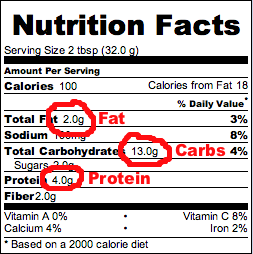
Does it work? Grams of protein x 4 (16) + grams of carb x 4 (52) + grams of fat x 9 (18) = 86 calories! Sometimes there are actually fewer calories than stated because the company overcompensates. That’s very respectable of the company, and a happy accident for us consumers!
However, it doesn’t always work like that. Here is a label for Fiber One Original.
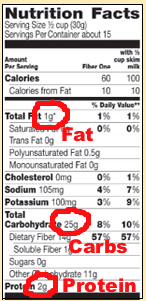
Let’s try it again: Grams of protein x 4 (8) + grams of carb x 4 (100) + grams of fat x 9 (9) = 117 calories. Hmm. That’s way off from the stated 60! Why is Fiber One allowed to say that? The FDA allows for a 20% discrepancy in food labeling, but this is much farther off than 20%. What gives?
So back to biology, there are many different kinds of carbohydrate molecules, and saying that they ALL have 4 calories a gram is simply incorrect. One of the reasons celery is such a low calorie food is that it contains a significant amount of cellulose, a fibrous carbohydrate that is indigestible by the human body. Therefore, if your body cannot break something down, it can’t absorb any energy from it. Calories that your body actually absorbs are called net calories.
You know how fiber is nature’s broom? That’s true too. Fiber “sweeps” through your system, cleaning out any unneeded particles and, because your body does not break fiber down, it goes out the other end. Your body does not absorb the calories from fiber either.
However, the traditional calorie counting formula does not take this into account. It would multiply ALL of the carbs in the product by four, instead of just the ones your body actually absorbs (total carbohydrates – dietary fiber). Behold, my modified and correct calorie counting formula!
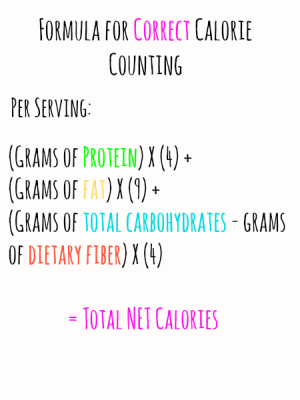
This concept is relatively widely accepted here in the US, but the FDA has not taken a stance on the subject. (For reference, here is a Hungry Girl article on this very topic.) In the meantime, this gives companies selling products in the United States free rein to take the initiative and use this concept to their advantage. Some companies, such as Fiber One, do just that.
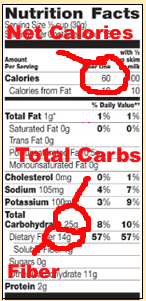
And now for your first application of your new favorite formula. Please contain your enthusiasm and hold your thunderous applause until the end. Grams of protein x 4 (8) + grams of fat x 9 (9) + grams of total carbohydrates – grams of fiber x 4 (44) = 61 calories (rounded down to 60 on the label). Whoa. Considering we thought the exact same serving of the exact same product had 117 calories just a minute ago, this is big. Huge.
Now you can start applying this to your daily life! Remember not to eat too much fiber as that is very hard on your GI track (and gives you plenty of gas; fun for all!), and do this, as well as everything else you do, in moderation.
I’m not going to lie… it still is pretty fun to do. You’re like Sherlock with a nutritional label. (I told you tweed would look awesome with your eyes!) Let’s take another look at the peanut butter label!
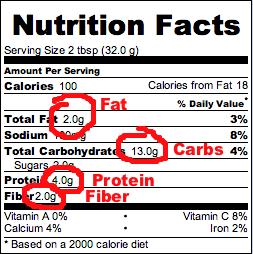
Grams of protein x 4 (16) + grams of fat x 9 (18) + grams of total carbohydrates – grams of fiber x 4 (44) = 78 calories. People. That’s 39 calories a tablespoon. Go forth and preach, grasshoppers.
I hope that clears things up! This is the method I use when calculating the nutritional information for all my recipes. Feel free to use it for whenever you want, but please slip my name into the conversation if at all possible… nudge, nudge. Spread the word! This is big!

What do you think? Do you have any nutrition questions or knowledge you’d like to share? Let the (friendly) discussion begin!
 How to Make Chocolate (or pb) Chip Sconies
How to Make Chocolate (or pb) Chip Sconies Nutter Butter Stuffed Chocolate Cookies
Nutter Butter Stuffed Chocolate Cookies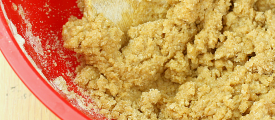 Copycat Oatmeal Creme Pies {And a Shopping Spree!}
Copycat Oatmeal Creme Pies {And a Shopping Spree!}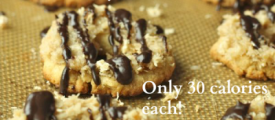 Homemade Healthy Samoas (Vegan/Gluten Free/Low Carb/Paleo)
Homemade Healthy Samoas (Vegan/Gluten Free/Low Carb/Paleo)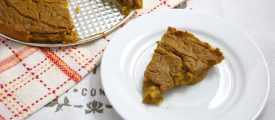 Pumpkin Pie (Vegan/Gluten Free/Grain Free/Sugar Free/Low Carb/Low Calorie)
Pumpkin Pie (Vegan/Gluten Free/Grain Free/Sugar Free/Low Carb/Low Calorie) Blueberry Stuffed Low Carb “Cocomeal”
Blueberry Stuffed Low Carb “Cocomeal”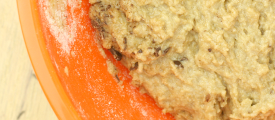 Healthy Chocolate Cookie Dough Bars
Healthy Chocolate Cookie Dough Bars Easy Low Carb Dinner Rolls
Easy Low Carb Dinner Rolls
Comments